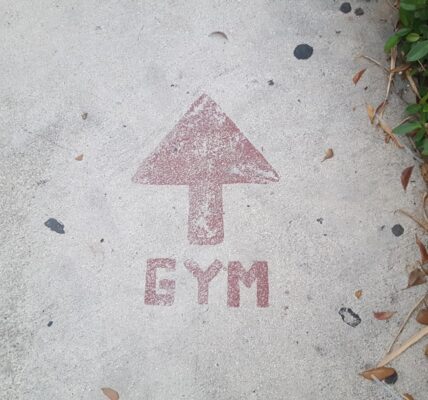High-intensity workouts, also known as HIIT (High-Intensity Interval Training), are a form of exercise characterized by short bursts of intense activity alternating with periods of rest or lower-intensity exercise. This training method is designed to maximize physical exertion in a limited time frame, offering an efficient approach to improving cardiovascular fitness, building strength, and burning calories. HIIT can be applied to various activities, including sprinting, cycling, jumping rope, or bodyweight exercises such as burpees and mountain climbers.
The effectiveness of high-intensity workouts relies on participants exerting maximum effort during intense intervals, elevating their heart rate to peak levels, followed by recovery periods. The underlying principle of high-intensity workouts is to challenge the body beyond its typical exertion levels during steady-state exercise. This approach can result in increased calorie expenditure both during and after the workout, as well as enhancements in cardiovascular endurance and muscular strength.
The intense activity intervals also contribute to improving the body’s oxygen utilization, leading to overall fitness improvements. High-intensity workouts are adaptable to various fitness levels, making them accessible to individuals ranging from beginners to experienced athletes. These workouts can be customized to align with specific fitness needs and goals, offering a versatile training option for those seeking to enhance their physical condition or elevate their existing fitness regimen.
Key Takeaways
- High-intensity workouts involve short bursts of intense exercise followed by periods of rest or lower intensity.
- Benefits of high-intensity workouts include improved cardiovascular health, increased calorie burn, and time efficiency.
- To incorporate high-intensity workouts into your fitness routine, start with a warm-up, choose exercises that target multiple muscle groups, and gradually increase intensity.
- Tips for maximizing high-intensity workouts include staying hydrated, listening to your body, and focusing on proper form.
- Common mistakes to avoid during high-intensity workouts include overtraining, neglecting warm-ups and cool-downs, and pushing through pain.
Benefits of High-Intensity Workouts
Time Efficiency
One of the most significant advantages of high-intensity workouts is their time efficiency. Because they involve short bursts of intense activity followed by rest periods, high-intensity workouts can deliver the same or even greater benefits as longer, steady-state exercise in a fraction of the time. This makes them an excellent option for people with busy schedules who struggle to find time for longer workouts.
Calorie Burning and Cardiovascular Health
High-intensity workouts have been shown to be effective for burning calories and improving metabolic rate, making them a great choice for those looking to lose weight or maintain a healthy body composition. Additionally, the intense bursts of activity followed by rest periods help to improve the body’s ability to use oxygen, leading to better cardiovascular endurance and overall fitness.
Building Strength and Accessibility
High-intensity workouts have also been shown to be effective for building strength and muscle mass. The intense nature of these workouts can help to stimulate muscle growth and improve muscular endurance, making them a valuable addition to any strength training routine. Furthermore, high-intensity workouts can be tailored to individual fitness levels, making them accessible to people of all abilities. Whether you’re a beginner looking to improve your fitness or an experienced athlete looking to take your training to the next level, high-intensity workouts can be customized to suit your needs and goals.
How to Incorporate High-Intensity Workouts into Your Fitness Routine

Incorporating high-intensity workouts into your fitness routine can be a great way to add variety and challenge to your training. There are several ways to do this, depending on your goals and preferences. One option is to replace some of your steady-state cardio sessions with high-intensity interval training.
For example, if you typically go for a long run or bike ride, you could try incorporating sprints or intervals of higher intensity into your workout. This can help to improve your cardiovascular fitness and calorie burn while adding a new challenge to your routine. Another way to incorporate high-intensity workouts is to add them as a supplement to your strength training routine.
For example, you could perform a circuit of bodyweight exercises like burpees, jump squats, and mountain climbers in between sets of weightlifting exercises. This can help to improve muscular endurance and calorie burn while adding an extra challenge to your strength training sessions. Finally, you could also dedicate specific workout sessions to high-intensity interval training, focusing on exercises like sprinting, cycling, or jump rope.
This can be a great way to push your limits and improve overall fitness in a short amount of time.
Tips for Maximizing Your High-Intensity Workouts
| Tip | Description |
|---|---|
| Warm Up Properly | Ensure to warm up for at least 5-10 minutes before starting your high-intensity workout to prevent injury. |
| Stay Hydrated | Drink water before, during, and after your high-intensity workout to stay hydrated and maintain performance. |
| Focus on Form | Pay attention to your form and technique to maximize the effectiveness of each exercise and reduce the risk of injury. |
| Rest and Recovery | Allow your body to rest and recover between high-intensity workouts to prevent overtraining and burnout. |
| Set Realistic Goals | Set achievable goals for your high-intensity workouts to track progress and stay motivated. |
To get the most out of your high-intensity workouts, it’s important to approach them with the right mindset and preparation. One key tip for maximizing your high-intensity workouts is to focus on proper form and technique. Because these workouts involve intense activity, it’s important to ensure that you’re performing the exercises correctly to minimize the risk of injury and maximize the effectiveness of the workout.
This may involve working with a trainer or coach to learn proper form for exercises like sprints, jumps, or bodyweight movements. Another tip for maximizing your high-intensity workouts is to pay attention to your nutrition and hydration. Because these workouts are so intense, it’s important to fuel your body properly before and after the workout.
This may involve eating a balanced meal with carbohydrates and protein before the workout to provide energy and support muscle recovery, as well as hydrating properly before and after the workout to maintain performance and aid in recovery. Additionally, it’s important to listen to your body during high-intensity workouts and adjust the intensity or duration as needed. Pushing yourself is important for progress, but it’s also important to recognize when you need to dial back the intensity or take a break to prevent overtraining or injury.
Common Mistakes to Avoid During High-Intensity Workouts
While high-intensity workouts can be incredibly effective for improving fitness and burning calories, there are some common mistakes that people make when incorporating them into their routine. One common mistake is not properly warming up before a high-intensity workout. Because these workouts involve intense activity, it’s important to prepare your body by warming up the muscles and increasing blood flow before diving into the intense intervals.
This may involve performing dynamic stretches, light cardio, or mobility exercises to prepare the body for the demands of the workout. Another common mistake is not allowing enough time for recovery between high-intensity workouts. Because these workouts are so intense, it’s important to give your body time to rest and recover before doing another high-intensity session.
This may involve scheduling these workouts with at least one day of rest in between or incorporating lower-intensity exercise on the days between high-intensity sessions. Additionally, it’s important to avoid doing high-intensity workouts every day without giving your body time to recover, as this can lead to overtraining and increased risk of injury.
The Importance of Recovery and Rest in High-Intensity Training

Recovery and rest are crucial components of any fitness routine, but they are especially important when it comes to high-intensity training. Because these workouts are so intense and demanding on the body, it’s important to give your body time to rest and recover in order to see progress and prevent injury. One key aspect of recovery in high-intensity training is proper nutrition and hydration.
After a high-intensity workout, it’s important to refuel your body with a balanced meal containing carbohydrates and protein to support muscle recovery and replenish energy stores. Additionally, staying hydrated is crucial for supporting performance and aiding in recovery. Another important aspect of recovery in high-intensity training is getting enough sleep.
Sleep is when the body repairs and rebuilds muscle tissue, so getting enough rest is crucial for seeing progress from your workouts. Aim for 7-9 hours of quality sleep each night to support recovery from high-intensity training. Finally, incorporating active recovery into your routine can also help support recovery from high-intensity training.
This may involve performing light cardio, mobility exercises, or yoga on rest days or after intense workouts to promote blood flow and reduce muscle soreness.
How High-Intensity Workouts Can Help You Reach Your Fitness Goals
High-intensity workouts can be an effective tool for reaching a wide range of fitness goals. Whether you’re looking to improve cardiovascular fitness, build strength, lose weight, or enhance athletic performance, high-intensity training can be tailored to help you achieve your goals. For those looking to improve cardiovascular fitness, high-intensity interval training has been shown to be effective for improving VO2 max and overall cardiovascular endurance.
By pushing your body to its limits during intense intervals followed by rest periods, you can improve your body’s ability to use oxygen and enhance cardiovascular fitness. For those looking to build strength and muscle mass, high-intensity workouts can be an effective complement to traditional strength training routines. The intense nature of these workouts can help stimulate muscle growth and improve muscular endurance, leading to improvements in strength and muscle definition over time.
Additionally, because high-intensity workouts are so effective for burning calories and improving metabolic rate, they can be a valuable tool for those looking to lose weight or maintain a healthy body composition. By incorporating high-intensity interval training into your routine, you can maximize calorie burn both during and after the workout while improving overall fitness. In conclusion, high-intensity workouts are a valuable addition to any fitness routine due to their time efficiency, calorie-burning benefits, improvements in cardiovascular health, and ability to be tailored to individual fitness levels.
By incorporating high-intensity interval training into your routine and following tips for maximizing their effectiveness while avoiding common mistakes, you can reach a wide range of fitness goals while prioritizing recovery and rest for long-term success in your fitness journey. Whether you’re a beginner looking to improve your fitness or an experienced athlete looking for a new challenge, high-intensity workouts can help you achieve your goals and take your training to the next level.
If you’re interested in learning more about fitness and wellness, check out the article “The Importance of Recovery in Fitness” on ManuManuBlog. This article discusses the significance of allowing your body to recover after intense workouts and the impact it has on overall fitness and performance. It provides valuable insights and tips on how to incorporate recovery into your fitness routine for optimal results.
FAQs
What is body high fitness?
Body high fitness is a type of exercise that focuses on improving strength, flexibility, and overall physical fitness through a combination of high-intensity workouts and mindful movement.
What are the benefits of body high fitness?
Body high fitness can help improve cardiovascular health, increase muscle strength, enhance flexibility, and promote overall well-being. It can also help with weight management and stress reduction.
What types of exercises are included in body high fitness?
Body high fitness may include a variety of exercises such as high-intensity interval training (HIIT), strength training, yoga, Pilates, and functional movements that engage multiple muscle groups.
Is body high fitness suitable for all fitness levels?
Body high fitness can be modified to accommodate different fitness levels, from beginners to advanced athletes. It is important to listen to your body and work at your own pace while gradually increasing intensity.
How often should one engage in body high fitness workouts?
The frequency of body high fitness workouts can vary depending on individual goals and fitness levels. It is generally recommended to engage in body high fitness workouts at least 3-5 times per week for optimal results.
Are there any potential risks or considerations with body high fitness?
As with any form of exercise, it is important to consult with a healthcare professional before starting a new fitness program, especially if you have any underlying health conditions. It is also important to use proper form and technique to reduce the risk of injury.




